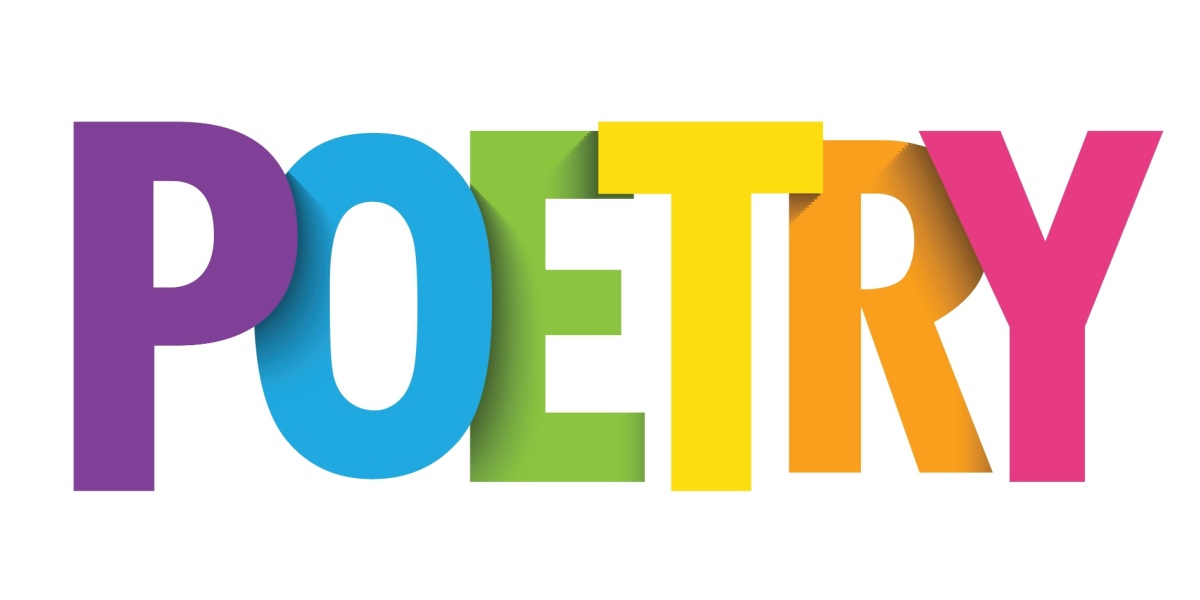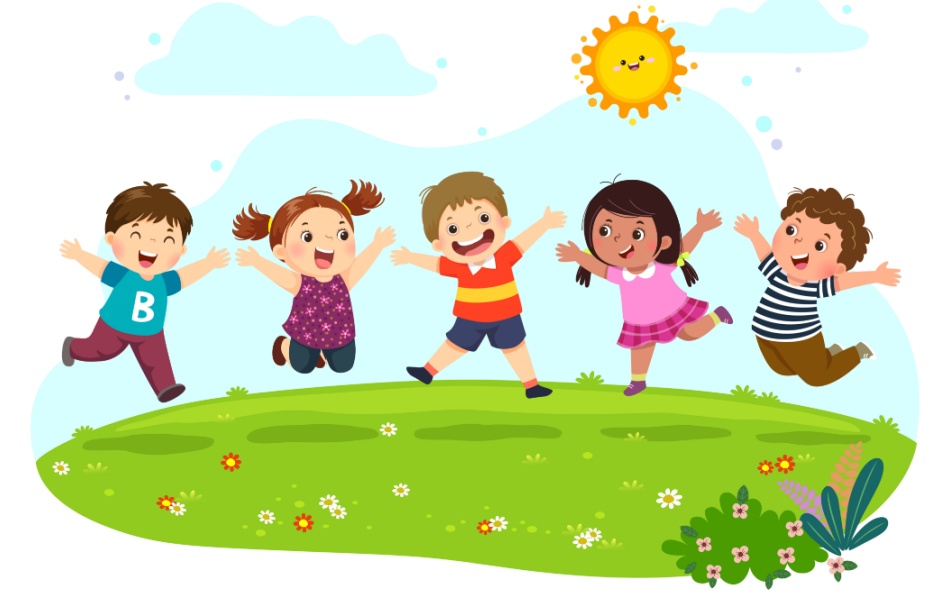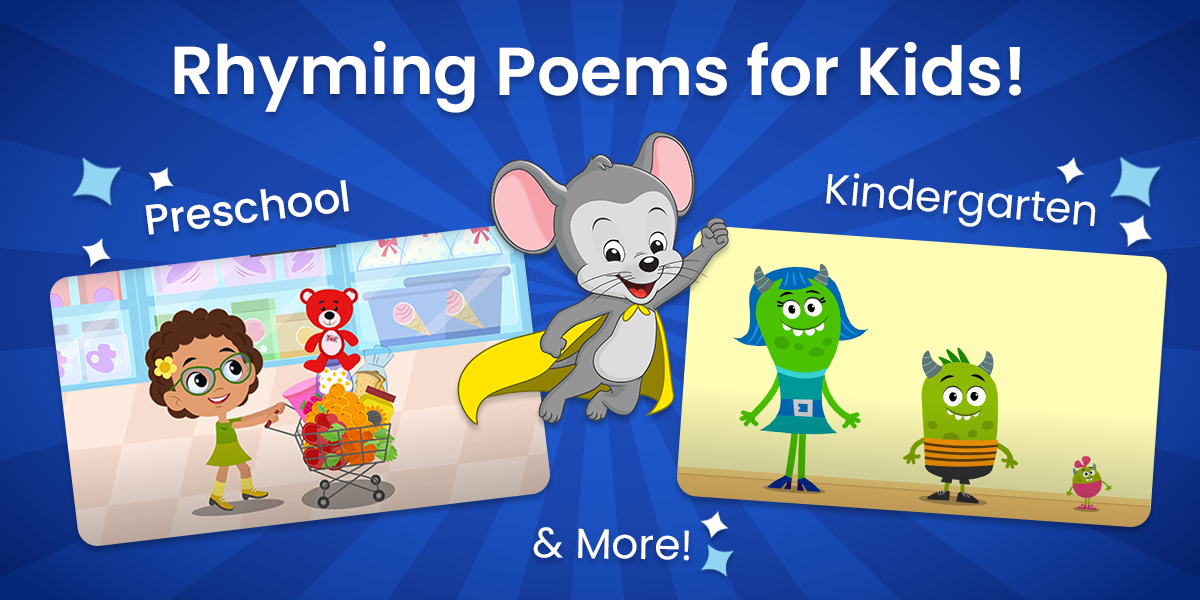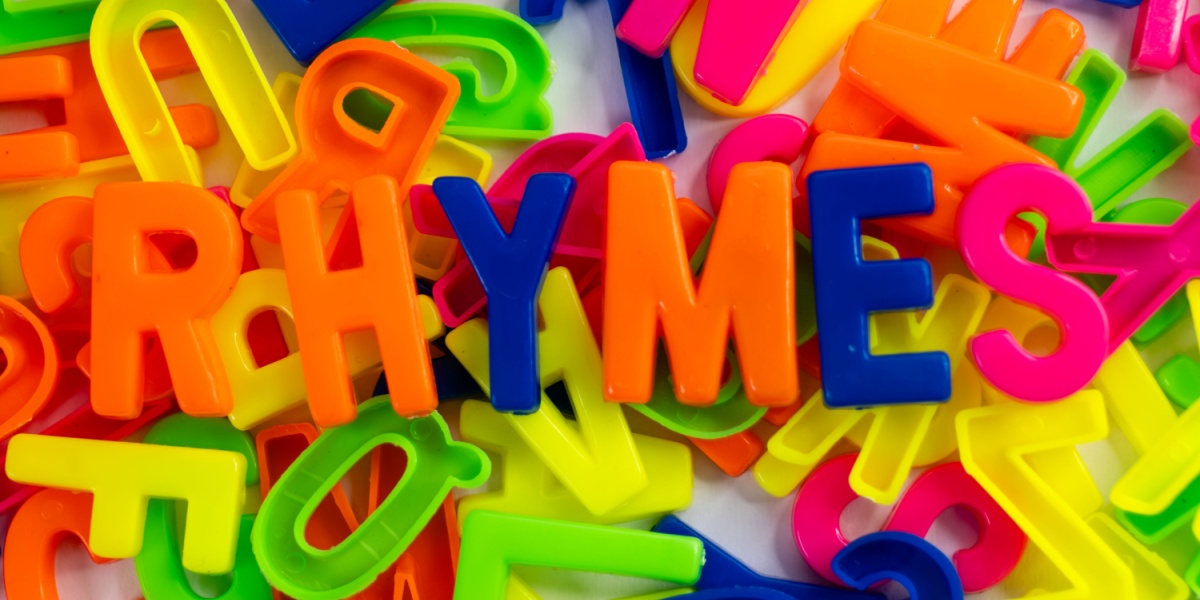
Why Rhyming is Important and Tips for Teaching It to Young Learners
Early learning materials often include rhyming words. Learn about its importance for young learners, including expert opinions.
What is a Rhyme?
To understand why rhyming is important, it’s key to recognize what a rhyme actually is. All words are made up of phonemes, the name for individual units of sound. For example, the word “bat” is made up of three phonemes: /b/ /a/ /t/. The word “bath” is also made up of three phonemes, but one of these is a consonant blend: /b/ /a/ /th/. The t and h come together to make one sound.
When words end in the same phonemes, they rhyme. “Bat” rhymes with “mat” and “cat” because they all share the same ending phonemes: /a/ /t/. “Bath” rhymes with “math” because they both end in /a/ /th/.
It’s important to remember that English contains a lot of irregularly spelled words. Because of that, words that are spelled with the same ending letters may not necessarily rhyme, such as “mood” and “good.” Similarly, words don’t need the same spelling pattern in order to rhyme (“practice” and “cactus”). What’s important is the matching sounds—phonemes—at the ends of the words.
Why is Rhyming Important for Preschoolers and Emergent Readers?
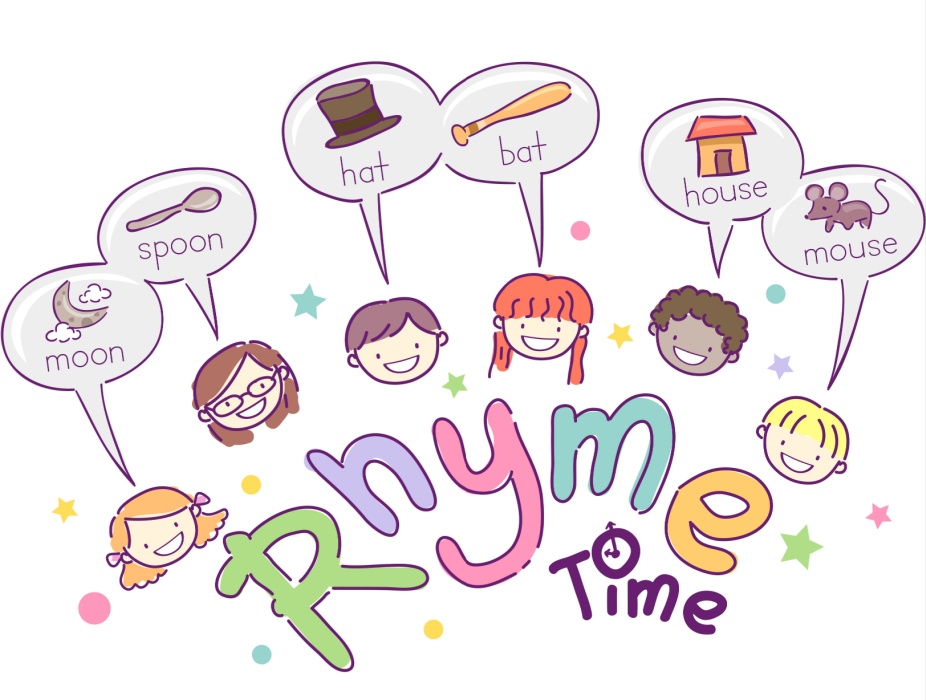
One of the most important pre-reading skills that young children must develop is phonemic awareness (also known as phonological awareness). When a child has phonemic awareness, they recognize that words are made of individual sounds (phonemes). They can break a word into its individual phonemes, recognizing each independently.
Rhyming is a way to help kids build phonemic awareness. To hear and recognize rhymes, preschoolers must be able to hear those matching phonemes at the ends of the words. If children aren’t able to recognize rhyming words, they may need more practice recognizing individual sounds in words.
For new readers, rhyming creates another path for practicing fluency. As students begin learning to read, they’re introduced to the concept of word families. These are words that end in the same spelling pattern and sounds, such as mat/bat/cat or sound/round/found. Rhyming is a natural part of word families, so when emergent readers can recognize rhymes, it offers clues into sound patterns and whether a word belongs in a particular family.
The Value of Rhyming: Research and Evidence
There’s been debate over the years about the importance of rhyming in literacy education. While studies have found some value in teaching young children to recognize and create rhymes, experts are somewhat divided on how much it really matters. Here are a few important findings and statements to consider.
National Panel on Early Literacy
In 2008, NELP released a report assessing the state of early literacy. In their report, they noted that while the ability to rhyme can be an indicator of phonological awareness, it wasn’t one of the strongest indicators. The ability to break words down into individual phonemes or blend phonemes to form words proved to be a much stronger predictor of decoding success.
They also noted that specifically teaching rhyming skills doesn’t seem to have any measurable effect on older children’s decoding and reading fluency. Nonetheless, phonemic awareness itself is a predictor of reading success, so activities (including rhyming) that support this development can be seen as worthwhile.
Common Core State Standards
These widely-used standards require students to “recognize and produce rhyming words” in kindergarten. This is part of the broader Phonological Awareness standard to “Demonstrate understanding of spoken words, syllables, and sounds (phonemes).” In later grades, rhyming skills aren’t specifically mentioned by the Common Core State Standards.
English for Multilingual Learners (EML/ELL/ESL)
For students who learn English as a second language, rhyming can be a more challenging skill due to the irregular spelling and pronunciation found throughout the language. As these students become more fluent in English and their ability to read in English grows, their rhyming skills improve. No studies currently indicate that an emphasis on rhyming helps EML/ELL/ESL students develop reading fluency, though.
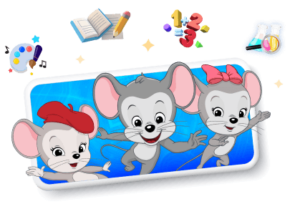
Then just $14.99/mo. until canceled
Why Teach Rhyming Skills?
Given this research, you might conclude that spending time teaching kids to rhyme isn’t very important. And while it’s true that rhyming isn’t one of the most vital skills emergent readers need to focus on, there are still benefits to learning about rhymes.
Rhyming songs, poems, and books are engaging and fun for young learners, making them a worthwhile part of every teaching toolkit. Plus, recognizing and producing rhymes helps students develop phonological awareness, which is a predictor of reading success. Including rhyming activities and games as one part of your child’s early learning program does have benefits, especially as they’re developing their phonemic awareness skills. However, rhyming does not need to be emphasized.
Activities to Help Teach Rhyming
If you’d like to incorporate rhyming into your child’s reading practice, here are a few fun ways to do it.
Rhyming Books for Kids
Choose age-appropriate rhyming books from our huge list of rhyming books for toddlers through second graders. Many of these are bound to become repeat reads throughout childhood.
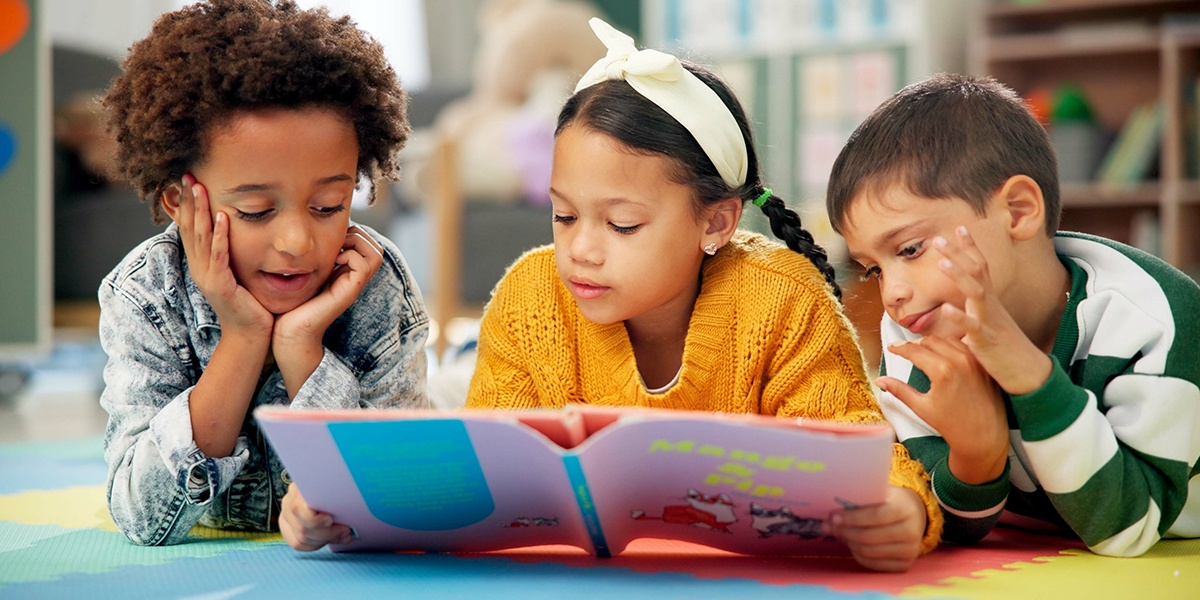
Nursery Rhymes and Songs
From old classics to new favorites, ABCmouse’s collection of nursery rhymes and songs includes lyrics to more than 100 rhyming ditties that families will love.
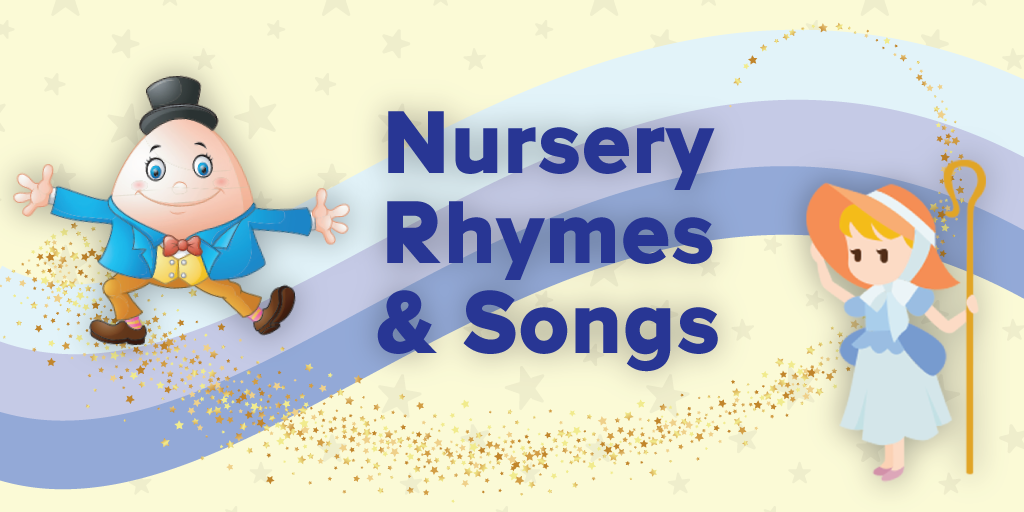
Rhyming Games & Activities
Get loads of fresh ideas to add rhyming into your child’s day with these engaging games and activities for young learners.
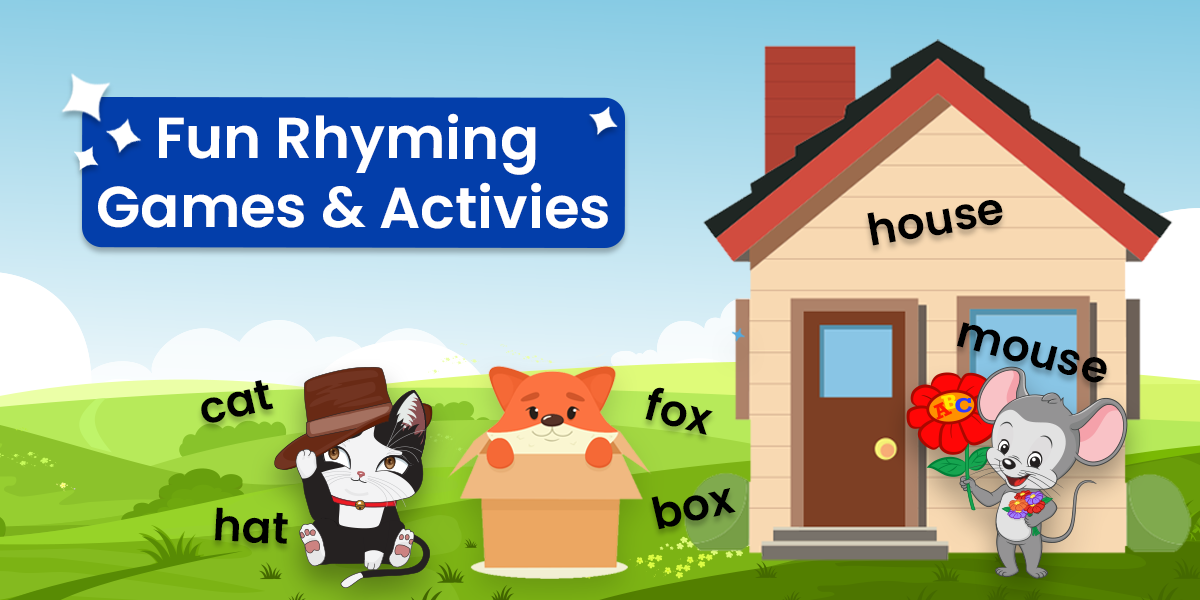
Rhyming Riddles & Poems
Emphasize the fun of rhyming with our 50+ rhyming riddles for kids and silly rhyming poems. Children will delight in trying to solve the riddles and enjoy the rhythmic nature of the poems.
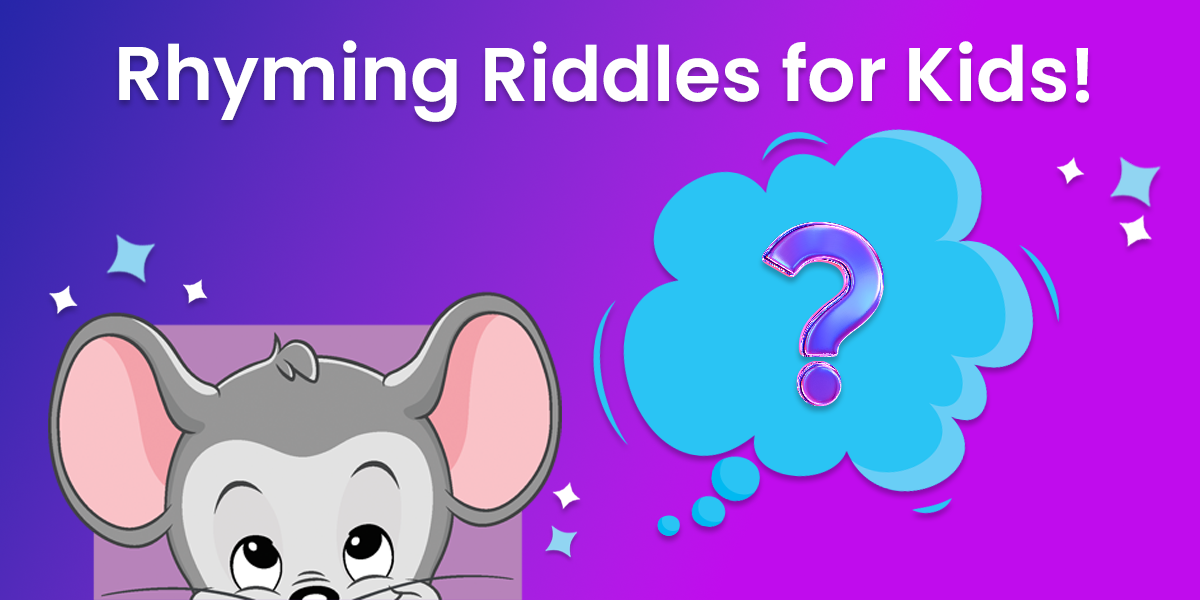
Complete Access to our Rhyming Resources Hub
ABCmouse’s Free Rhyming Resource Hub offers fun activities, games, books, and printables to help kids build phonemic awareness and a love for language.
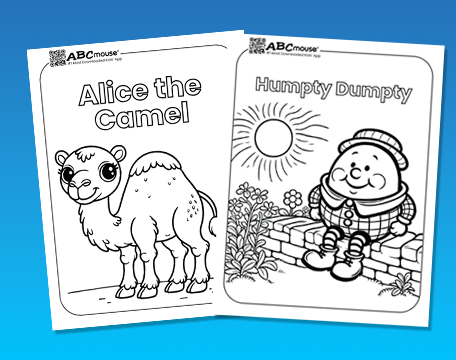

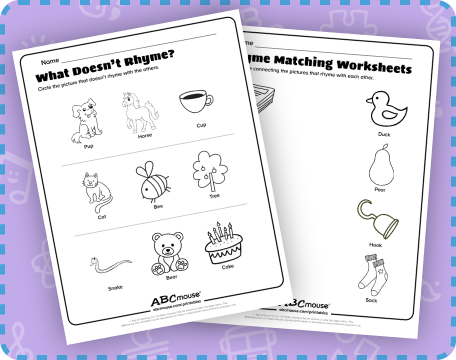
With rhyming riddles, poems, and interactive games, children can explore rhyming in playful ways. The hub also includes teaching tips and creative writing activities for toddlers through early elementary students.
Complete Access to our Rhyming Resources
ABCmouse’s Free Rhyming Resource Hub offers fun activities, games, books, and printables to help kids build phonemic awareness and a love for language.
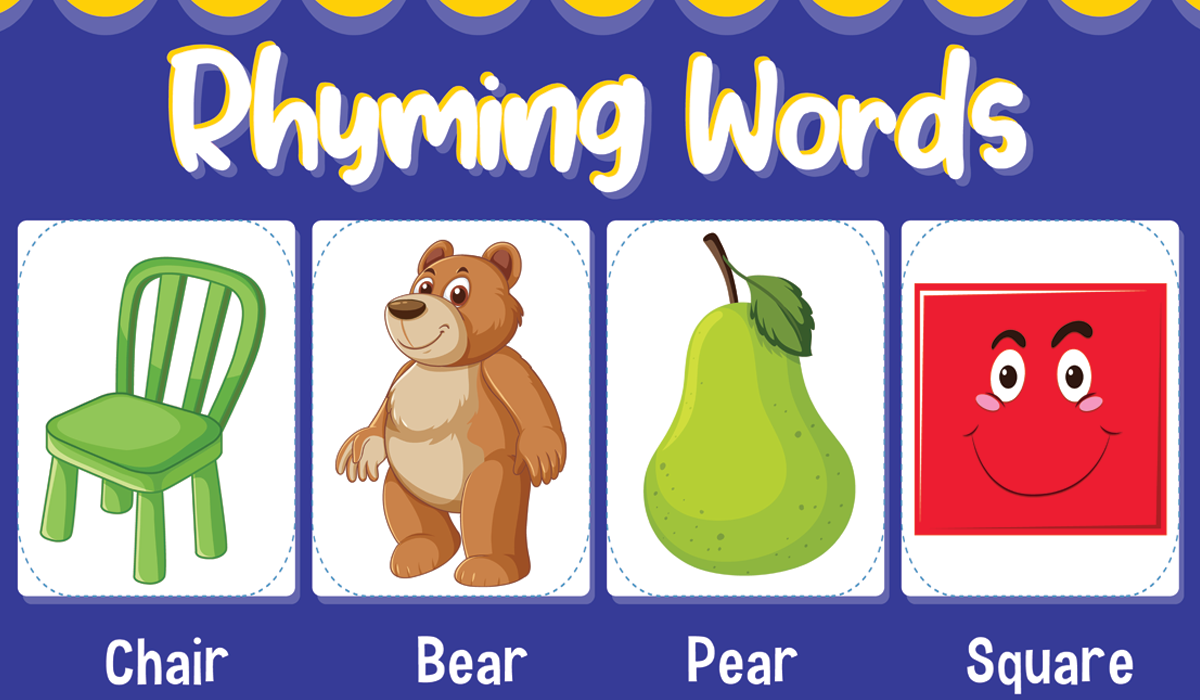
With rhyming riddles, poems, and interactive games, children can explore rhyming in playful ways. The hub also includes teaching tips and creative writing activities for toddlers through early elementary students.
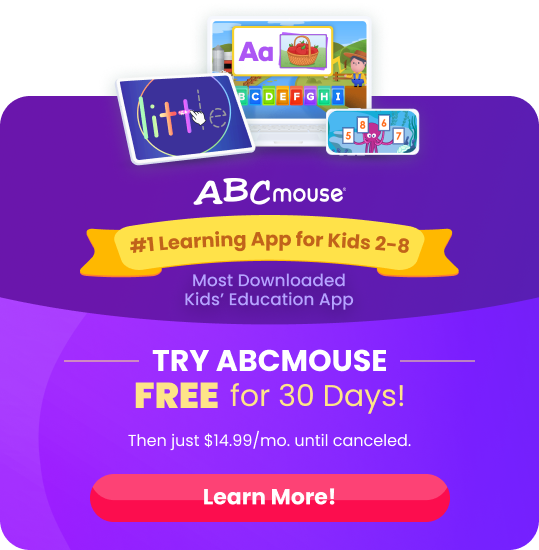
-
Why Rhyming is Important? (Tips for Teaching)
Discover why rhyming is key for early literacy and how it helps kids develop phonemic awareness. Get expert insights and fun activities to teach rhyming.
-
Rhyming Couplets – With Definitions and Examples
Discover rhyming couplets with fun examples, poetry styles, and engaging activities for kids. Explore famous poems and creative ways to learn rhyme!
-
Spring Poems for Preschool & Kindergarten
Celebrate spring with fun poems for kids! From rhyming verses to gentle free verse, these seasonal poems bring sunshine, rainbows, and nature to life.
-
Easy Ways to Teach Blending Words
Teach young readers to blend words with these fun strategies and activities! Discover phonics blending techniques, examples, and hands-on learning tips.
-
Best Rhyming Books for Young Readers
Discover 50 engaging rhyming books for toddlers to second graders! Boost early literacy skills, enjoy playful language, and make reading even more fun.
-
Rhyming Poems for Preschool & Kindergarten
Discover fun and easy rhyming poems for preschool and kindergarten! Boost reading skills with silly, educational, and classic rhymes kids will love.

